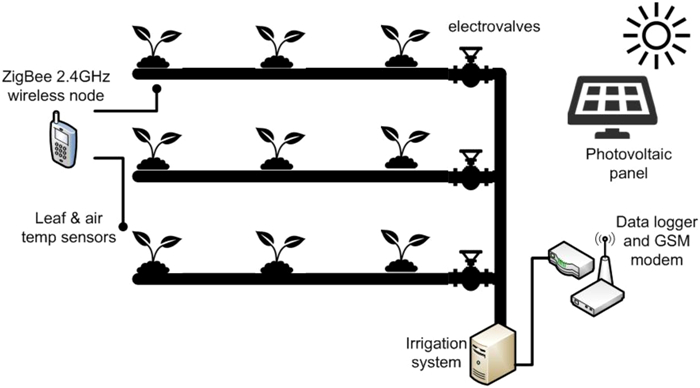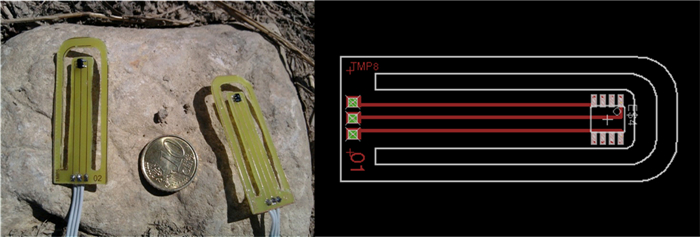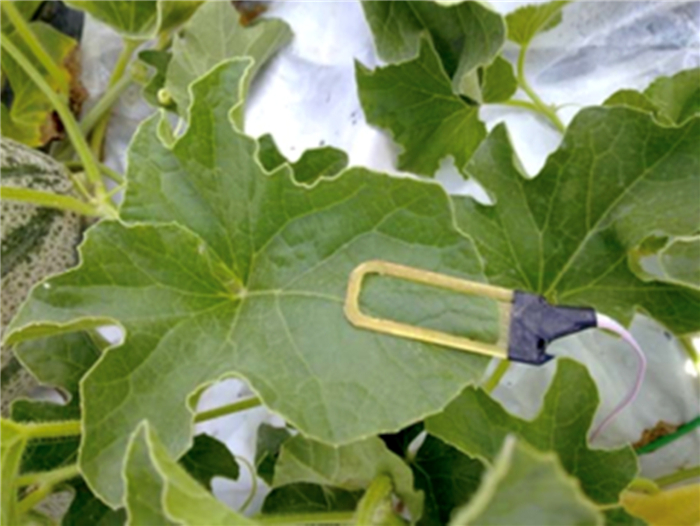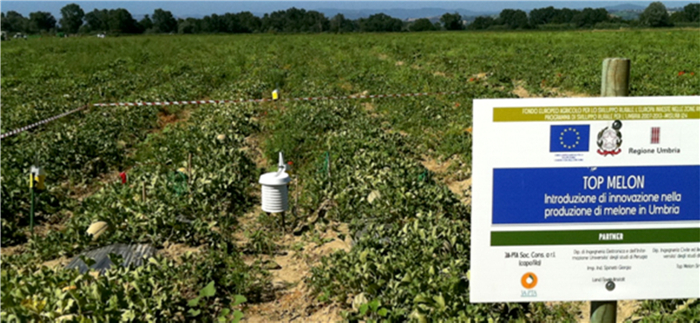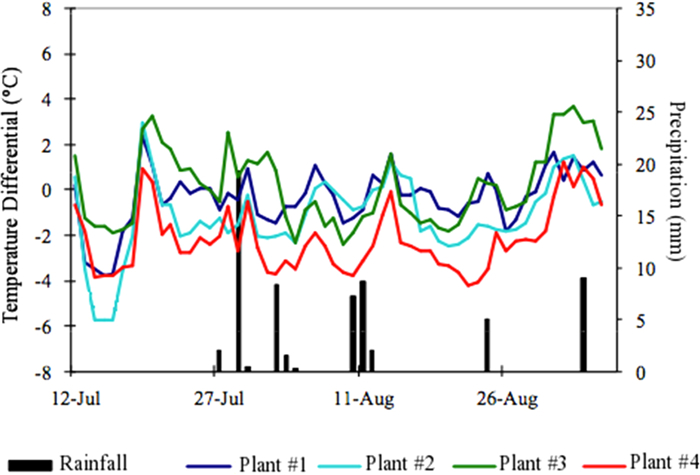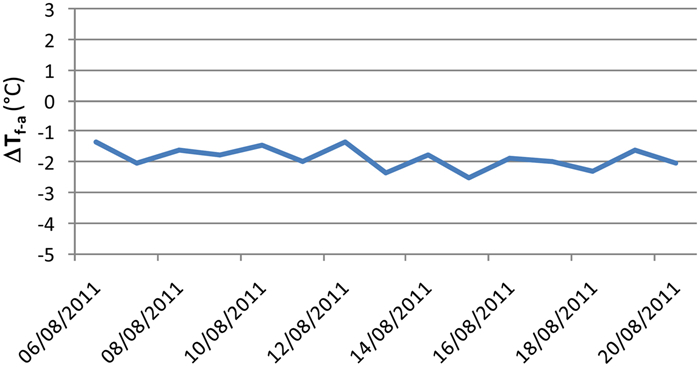Leaf compatible "eco-friendly" temperature sensor clip for high density monitoring wireless networks
-
DI – Department of Engineering, University of Perugia, via Duranti 93, 06125 Perugia, Italy. Phone: +39 0755853633
More Information
-
Author Bio:
 Valeria Palazzari
Valeria Palazzari received a degree in Electronic Engineering and a Ph.D. degree in Information and Electronic Engineering at the University of Perugia, Italy, in 2000 and 2003, respectively. Since 2000, she has been with the High Frequency Electronics laboratory (HFElab), Department of Engineering, University of Perugia. In 2003 she joined the ATHENA Research Group, Georgia Institute of Technology, Atlanta. Her research interests range from the modeling, design, and realization of microwave integrated circuits in SiGe BiCMOS technology to packaging technologies for RF and wireless systems.
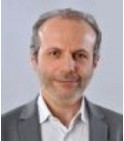 Paolo Mezzanotte
Paolo Mezzanotte received the Ph.D. degree from the University of Perugia, Italy, in 1997. Since January 2007, he is Associate Professor with the same University, teaching the classes of Radiofrequency Engineering. His research activities concern numerical methods and CAD techniques for passive microwave structures and the analysis and design of microwave and millimeter-wave circuits. More recently his research interests were mainly focused on the study of advanced technologies such as LTCC, RF- MEMS, and microwave circuits printed on green substrates. These research activities are testified by more than one hundred publications in the most important specialized journals and at the main conferences of the microwave scientific community.
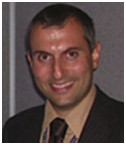 Federico Alimenti
Federico Alimenti received the Laurea and the Ph.D. degrees from the University of Perugia, Italy, in 1993 and 1997, respectively, both in Electronic Engineering. In 1996 he was recipient of the URSI Young Scientist Award and Visiting Scientist at the Technical University of Munich, Germany. Since 2001 he has been with the Department of Engineering at the University of Perugia teaching the class of Microwave Electronic. Between 2011 and 2014 he was the scientific coordinator of the ENIAC ARTEMOS project. In 2013 he was the recipient of the IET Premium (Best Paper) Award and the TPC Chair of the IEEE Wireless Power Transfer Conference. In the summer 2014 he was Visiting Professor at EPFL, Switzerland. His interests are about microwave circuit design. He has authored a European Patent and more than 150 papers in journals and conferences. Federico Alimenti (H-index equal to 14, Scopus) is Senior IEEE Member.
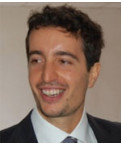 Francesco Fratini
Francesco Fratini received a degree in Electronic Engineering at the University of Perugia, Italy in 2009. Since 2010, he collaborated with the Department of Agricultural, Food and Environmental Science (DSA3), University of Perugia, in the following areas of research: crop water stress monitoring, automated irrigation systems, and rainfall simulation for soil erosion studies.
 Giulia Orecchini
Giulia Orecchini received a degree in Electronic Engineering and a Ph.D. degree in Information and Electronic Engineering at the University of Perugia, Italy, in 2008 and 2012, respectively. In Autumn 2008 she joined the ATHENA Research Group, Georgia Institute of Technology, Atlanta. Her research interests concern the development of RFID electronic systems and technologies exploiting new technologies such as electronics on paper, CNT, and graphene.
 Luca Roselli
Luca Roselli (M92 SM01), MG in 1988. In 1991 he joined the University of Perugia, where he is currently teaching Applied Electronics and coordinating the HFE-Lab as Associate Professor. In 2000 he founded the spin-off WiS Srl. From 2008 to 2012 he was member of the BoD of ARTsrl. He organized the Ⅶ CEM-TD-2007 and the first IEEE-WPTC-2013. He is member: of the list of experts of Italian Ministry of Research, of the IEEE Technical Committees MTT-24 (past chair), -25 and -26; of the ERC Panel PE7, of the AC of IEEE-WPTC and chairman of the SC-32 of IMS. He is involved in the boards of several International Conferences and he is reviewer for many international reviews (including IEEE-Proceedings, -MTT and -MWCL). His research interest is HF electronic systems, with special attention to RFID-NFC, new materials and WPT. He published more than 220 contributions (HFi 23, about 1850 scitations – Scholar)
-
Corresponding author:
V. Palazzari Email: valeria.palazzari@gmail.com
-
Abstract
This paper describes the design, realization, and application of a custom temperature sensor devoted to the monitoring of the temperature differential between the leaf and the air. This difference is strictly related to the plant water stress and can be used as an input information for an intelligent and flexible irrigation system. A wireless temperature sensor network can be thought as a decision support system used to start irrigation when effectively needed by the cultivation, thus saving water, pump fuel oil, and preventing plant illness caused by over-watering.
-
About this article
Cite this article
Palazzari V, Mezzanotte P, Alimenti F, Fratini F, Orecchini G, et al. 2017. Leaf compatible 'eco-friendly' temperature sensor clip for high density monitoring wireless networks. Wireless Power Transfer 4(1): 55-60 doi: 10.1017/wpt.2017.1
|
Palazzari V, Mezzanotte P, Alimenti F, Fratini F, Orecchini G, et al. 2017. Leaf compatible "eco-friendly" temperature sensor clip for high density monitoring wireless networks. Wireless Power Transfer 4(1): 55-60 doi: 10.1017/wpt.2017.1
|


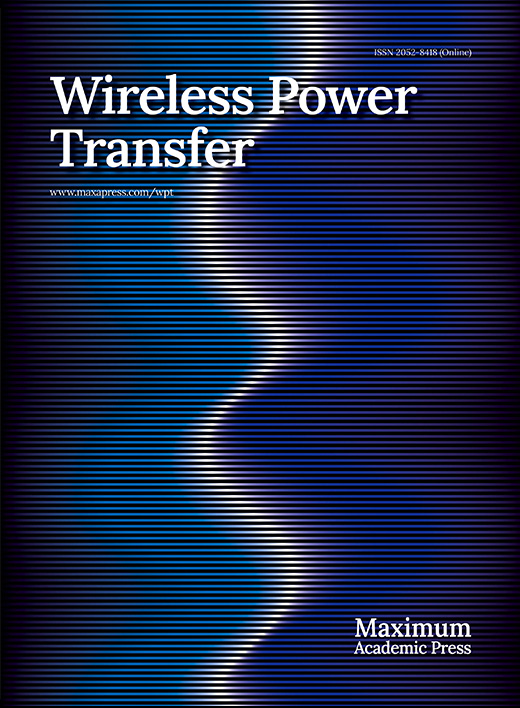






 Valeria Palazzari received a degree in Electronic Engineering and a Ph.D. degree in Information and Electronic Engineering at the University of Perugia, Italy, in 2000 and 2003, respectively. Since 2000, she has been with the High Frequency Electronics laboratory (HFElab), Department of Engineering, University of Perugia. In 2003 she joined the ATHENA Research Group, Georgia Institute of Technology, Atlanta. Her research interests range from the modeling, design, and realization of microwave integrated circuits in SiGe BiCMOS technology to packaging technologies for RF and wireless systems.
Valeria Palazzari received a degree in Electronic Engineering and a Ph.D. degree in Information and Electronic Engineering at the University of Perugia, Italy, in 2000 and 2003, respectively. Since 2000, she has been with the High Frequency Electronics laboratory (HFElab), Department of Engineering, University of Perugia. In 2003 she joined the ATHENA Research Group, Georgia Institute of Technology, Atlanta. Her research interests range from the modeling, design, and realization of microwave integrated circuits in SiGe BiCMOS technology to packaging technologies for RF and wireless systems.  Paolo Mezzanotte received the Ph.D. degree from the University of Perugia, Italy, in 1997. Since January 2007, he is Associate Professor with the same University, teaching the classes of Radiofrequency Engineering. His research activities concern numerical methods and CAD techniques for passive microwave structures and the analysis and design of microwave and millimeter-wave circuits. More recently his research interests were mainly focused on the study of advanced technologies such as LTCC, RF- MEMS, and microwave circuits printed on green substrates. These research activities are testified by more than one hundred publications in the most important specialized journals and at the main conferences of the microwave scientific community.
Paolo Mezzanotte received the Ph.D. degree from the University of Perugia, Italy, in 1997. Since January 2007, he is Associate Professor with the same University, teaching the classes of Radiofrequency Engineering. His research activities concern numerical methods and CAD techniques for passive microwave structures and the analysis and design of microwave and millimeter-wave circuits. More recently his research interests were mainly focused on the study of advanced technologies such as LTCC, RF- MEMS, and microwave circuits printed on green substrates. These research activities are testified by more than one hundred publications in the most important specialized journals and at the main conferences of the microwave scientific community.  Federico Alimenti received the Laurea and the Ph.D. degrees from the University of Perugia, Italy, in 1993 and 1997, respectively, both in Electronic Engineering. In 1996 he was recipient of the URSI Young Scientist Award and Visiting Scientist at the Technical University of Munich, Germany. Since 2001 he has been with the Department of Engineering at the University of Perugia teaching the class of Microwave Electronic. Between 2011 and 2014 he was the scientific coordinator of the ENIAC ARTEMOS project. In 2013 he was the recipient of the IET Premium (Best Paper) Award and the TPC Chair of the IEEE Wireless Power Transfer Conference. In the summer 2014 he was Visiting Professor at EPFL, Switzerland. His interests are about microwave circuit design. He has authored a European Patent and more than 150 papers in journals and conferences. Federico Alimenti (H-index equal to 14, Scopus) is Senior IEEE Member.
Federico Alimenti received the Laurea and the Ph.D. degrees from the University of Perugia, Italy, in 1993 and 1997, respectively, both in Electronic Engineering. In 1996 he was recipient of the URSI Young Scientist Award and Visiting Scientist at the Technical University of Munich, Germany. Since 2001 he has been with the Department of Engineering at the University of Perugia teaching the class of Microwave Electronic. Between 2011 and 2014 he was the scientific coordinator of the ENIAC ARTEMOS project. In 2013 he was the recipient of the IET Premium (Best Paper) Award and the TPC Chair of the IEEE Wireless Power Transfer Conference. In the summer 2014 he was Visiting Professor at EPFL, Switzerland. His interests are about microwave circuit design. He has authored a European Patent and more than 150 papers in journals and conferences. Federico Alimenti (H-index equal to 14, Scopus) is Senior IEEE Member.  Francesco Fratini received a degree in Electronic Engineering at the University of Perugia, Italy in 2009. Since 2010, he collaborated with the Department of Agricultural, Food and Environmental Science (DSA3), University of Perugia, in the following areas of research: crop water stress monitoring, automated irrigation systems, and rainfall simulation for soil erosion studies.
Francesco Fratini received a degree in Electronic Engineering at the University of Perugia, Italy in 2009. Since 2010, he collaborated with the Department of Agricultural, Food and Environmental Science (DSA3), University of Perugia, in the following areas of research: crop water stress monitoring, automated irrigation systems, and rainfall simulation for soil erosion studies.  Giulia Orecchini received a degree in Electronic Engineering and a Ph.D. degree in Information and Electronic Engineering at the University of Perugia, Italy, in 2008 and 2012, respectively. In Autumn 2008 she joined the ATHENA Research Group, Georgia Institute of Technology, Atlanta. Her research interests concern the development of RFID electronic systems and technologies exploiting new technologies such as electronics on paper, CNT, and graphene.
Giulia Orecchini received a degree in Electronic Engineering and a Ph.D. degree in Information and Electronic Engineering at the University of Perugia, Italy, in 2008 and 2012, respectively. In Autumn 2008 she joined the ATHENA Research Group, Georgia Institute of Technology, Atlanta. Her research interests concern the development of RFID electronic systems and technologies exploiting new technologies such as electronics on paper, CNT, and graphene.  Luca Roselli (M92 SM01), MG in 1988. In 1991 he joined the University of Perugia, where he is currently teaching Applied Electronics and coordinating the HFE-Lab as Associate Professor. In 2000 he founded the spin-off WiS Srl. From 2008 to 2012 he was member of the BoD of ARTsrl. He organized the Ⅶ CEM-TD-2007 and the first IEEE-WPTC-2013. He is member: of the list of experts of Italian Ministry of Research, of the IEEE Technical Committees MTT-24 (past chair), -25 and -26; of the ERC Panel PE7, of the AC of IEEE-WPTC and chairman of the SC-32 of IMS. He is involved in the boards of several International Conferences and he is reviewer for many international reviews (including IEEE-Proceedings, -MTT and -MWCL). His research interest is HF electronic systems, with special attention to RFID-NFC, new materials and WPT. He published more than 220 contributions (HFi 23, about 1850 scitations – Scholar)
Luca Roselli (M92 SM01), MG in 1988. In 1991 he joined the University of Perugia, where he is currently teaching Applied Electronics and coordinating the HFE-Lab as Associate Professor. In 2000 he founded the spin-off WiS Srl. From 2008 to 2012 he was member of the BoD of ARTsrl. He organized the Ⅶ CEM-TD-2007 and the first IEEE-WPTC-2013. He is member: of the list of experts of Italian Ministry of Research, of the IEEE Technical Committees MTT-24 (past chair), -25 and -26; of the ERC Panel PE7, of the AC of IEEE-WPTC and chairman of the SC-32 of IMS. He is involved in the boards of several International Conferences and he is reviewer for many international reviews (including IEEE-Proceedings, -MTT and -MWCL). His research interest is HF electronic systems, with special attention to RFID-NFC, new materials and WPT. He published more than 220 contributions (HFi 23, about 1850 scitations – Scholar) 


